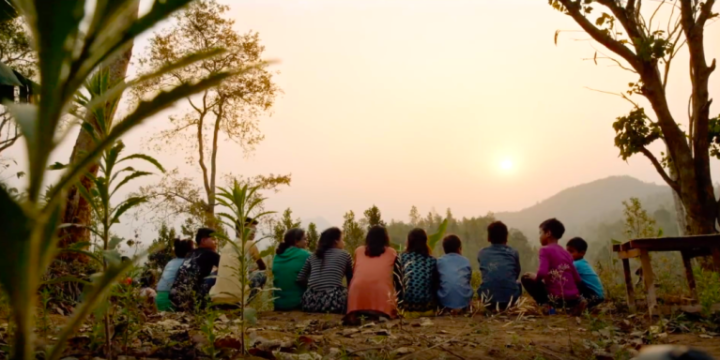- Your cart is empty
- Continue shopping
An Insect that emerges once in four years on the surface of the earth. An insect which people wait for as a guest that comes once in four years. An insect that comes as a hope that turns life into a celebration with its unique color and taste. How many such insects do we know with so much passion? The answer is simple, not even one. But rural and tribal societies have many such creatures that are rich with life and are food for people.
Many of us have eaten river snails and crabs. The aquatic world has fascinated us and there is great attraction for all kinds of fishes. There is also the odd reference and symbolisation of them in religion and culture. But there is no public-social celebration dedicated to them. It is all very obvious as modern civilizations traditionally developed by the banks of rivers and the sea. But the faster they modernized, the faster they grew away from nature. States in Northeastern India are more natural in comparison; both in the way they live and from the core of their hearts and souls.

The insects that we are talking about can be found in the jungles of Meghalaya near the capital city, Shillong. They appear once in four years, like the football world cup. This fact would have remained invisible to many North Indians like me and to the rest of the country, if a movie called Niangtaser was not made.
The movie released on YouTube today. I watched the film with great enthusiasm; people were heading towards the jungle with flambeau torches in search of the Niangtaser. Perhaps they were looking for a light they lost in an epidemic thousands of years ago. The scenes of this journey in the dark night transported me into a world of folklore, where village after village was destroyed due to an incurable disease. There was a sole survivor, a woman that was left alone in the jungle, by the villagers, fearing an outbreak.
In a few days people forgot that they left her in the forest. Four years later they remembered her and went to see what happened. The woman was not found, there were several insects of the same breed where they left her. They called the insect The Niangtaser. The innocent insect left everyone astounded. It’s not known exactly when this insect became a part of tribal food in Meghalaya but it is strange that even today it appears only once in four years.

People in Meghalaya celebrate the appearance of the Niangtaser as a festival. They dance, sing, hunt and cook it in a unique way by putting it in Bamboo containers. The pace, excitement, passion and rhythm of the film ‘Niangtaser’ is comparable to the exuberance of a football match.
It is all of 8 minutes in duration but its impact lingers on for hours after watching it. One can literally feel and experience the magic in the lives of people in North East India. Hunting is usually a personal experience, but the hunt for the Niangtsar is social and community related event. People collectively hunt for it at midnight, with torches in their hands, waking up one another.

Social media has very little information about the Niangtaser. It was during the football world cup in 2010, that the Niangtaser Festival began in Ri Bhoi district. It was followed up in 2014 after an interval of 4 years and this year it had taken the form of a large-scale celebration. There is no doubt that connecting the insect to the world cup is the brainchild of sports loving people. But over the years the festival has transformed into an event with a social cause.
Tourists in Meghalaya are loving the idea and have started attending the festival. It’s not an easy destination to reach as you have to hike through tough terrain into the forest to sight the insect. Naturally, because dense forests protect the future of the Niangtaser. In that sense this short film is also a small but integral part of the awareness campaign, to be kind to nature and love it as our own.
